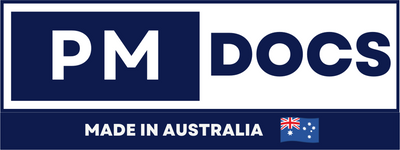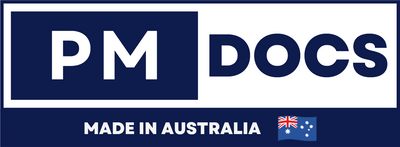Project Decision Document
Introduction
A Project Decision Document is critical for project management professionals to make informed and strategic decisions throughout a project. It provides a clear and concise overview of the project's goals, objectives, risks, and constraints, allowing stakeholders to understand the rationale behind critical decisions. This document is a reference point for project teams and helps ensure all parties are aligned and working towards a common goal. In this blog post, we will explore the importance of the Project Decision Document and discuss best practices for creating and utilizing this essential project management tool.

Purpose of the Project Decision Document
1. Introduction: This section provides an overview of the project decision document, explaining its purpose and scope.
2. Background: This section provides the necessary context for the decision document by outlining the background information and reasons for undertaking the project.
3. Objectives: This section clearly defines the project's objectives, which should be specific, measurable, achievable, relevant, and time-bound (SMART). It outlines what the project aims to achieve and the desired outcomes.
4. Stakeholders: This section identifies the key stakeholders involved in the project and their respective roles and responsibilities. It helps ensure that all relevant parties are considered and involved in decision-making.
5. Project Scope: This section outlines the project's boundaries and limitations, including what is considered in and out of scope. It helps establish clear expectations and prevents scope creep.
6. Options and Alternatives: This section presents different options and alternatives available for the project, along with their advantages, disadvantages, and potential risks. It allows decision-makers to make informed choices by weighing the pros and cons of each option.
7. Decision Criteria: This section defines the criteria used to evaluate and compare the options. It can include cost, time, resources, technical feasibility, and alignment with organizational goals.
8. Decision Analysis: This section provides a detailed analysis of each option, evaluating them against the decision criteria. It includes quantitative and qualitative assessments to support the decision-making process.
9. Recommendations: This section presents the recommended option based on the decision analysis. It includes a clear rationale for the recommendation, outlining the justifications and benefits.
10. Implementation Plan: This section outlines the plan for implementing the chosen option, including the timeline, resources needed, and responsibilities of each stakeholder. It aims to ensure a smooth and successful execution of the decision.
11. Risk Assessment: This section identifies and assesses the potential risks of implementing the decision. It includes contingency plans and mitigation strategies to address potential challenges or setbacks.
12. Approval Process: This section outlines the process for obtaining approvals from relevant stakeholders, such as project sponsors, executives, or governing boards. It ensures that all necessary approvals are obtained before proceeding with implementation.
13. Communication Plan: This section defines the communication strategy for sharing the decision and its implications with all stakeholders. It ensures that all parties are informed about the decision and understand its impact on the project.
14. Review and Monitoring: This section outlines the process for reviewing and monitoring the progress of the decision implementation. It includes regular checkpoints to assess if the decision is on track and if any adjustments or modifications are needed.
15. Conclusion: This section summarizes the key points of the project decision document and reiterates the recommended option and its rationale. It serves as a final summary before seeking approvals and initiating the implementation phase.
Scope and Objectives of the Project
1. Introduction
Provide a brief overview of the project.
State the significance and purpose of the project.
2. Scope
Define the boundaries of the project.
Specify the deliverables and outcomes expected from the project.
Identify the project constraints and limitations.
3. Objectives
Clearly state the project objectives in measurable terms.
Outline the specific goals and targets to be achieved.
Ensure that the objectives are attainable and aligned with the project scope.
4. Project Management
Describe the project management approach to be employed.
Detail the project roles and responsibilities.
Define the project team structure and hierarchy.
5. Project Schedule
Develop a detailed project schedule, including key milestones and dependencies.
Identify the critical path and determine the project duration.
Allocate resources and estimate the time required for each task.
6. Resource Management
Identify and allocate the necessary resources such as personnel, equipment, and budget.
Establish a procurement plan for any external resources required.
Evaluate and monitor resource utilization throughout the project.
7. Risk Management
Identify potential risks and uncertainties associated with the project.
Develop a risk management plan to mitigate and monitor these risks.
Establish contingency plans for potential risks and issues.
8. Communication
Establish effective communication channels and protocols within the project team.
Define the reporting structure and frequency of progress updates.
Ensure that all stakeholders are appropriately informed and involved.
9. Quality Management
Establish quality standards and metrics for the project.
Develop a quality assurance plan to ensure adherence to these standards.
Conduct regular quality checks and audits to assess and improve project quality.
10. Monitoring and Evaluation
Define the monitoring and evaluation processes for the project.
Set up mechanisms to track progress and performance against the project objectives.
Conduct periodic project reviews and assessments to identify areas for improvement.
11. Conclusion
Summarize the key points of the scope and objectives of the project.
Emphasize the expected outcomes and benefits of the project.
Highlight the importance of successful project implementation.
Conclusion,
The Project Decision Document is an essential tool for project management. It provides a straightforward, structured approach to making important decisions throughout the project lifecycle. By using this document, project teams can ensure that all decisions are made systematically and well-informed. It outlines the decision-making process, the criteria for evaluating options, and the responsibilities of team members. Utilizing the Project Decision Document will lead to more efficient and successful project outcomes.










